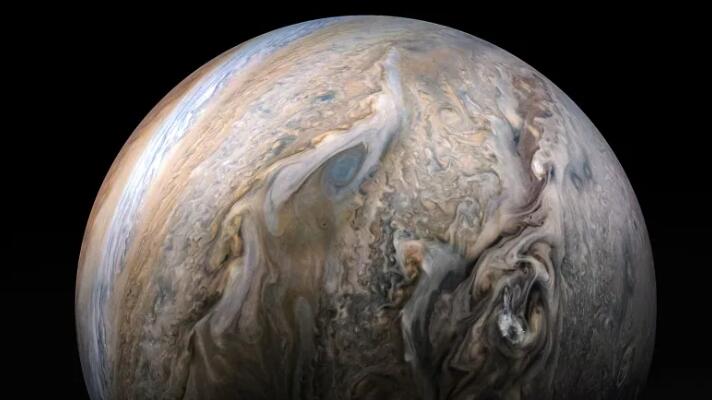Jupiter will be its brightest in 59 years Monday. Here’s how to see it for yourself

The giant planet can be seen from anywhere, including in light-polluted cities
You may have noticed a bright “star” in the eastern sky after sunset, but that’s no star: it’s the mighty planet Jupiter, and it’s almost at its peak brightness.
Jupiter, the largest planet in our solar system, is reaching opposition, an event that occurs when a celestial object rises in the east as the sun sets in the west, putting both the sun and the object on opposite sides of Earth.
But what also makes this special is that the planet will be the closest it has been to Earth in 59 years, meaning it will also be brighter than usual.
The reason planets vary in their distance from Earth is because their orbits aren’t perfectly circular, but rather slightly elliptical.

While Jupiter’s opposition happens roughly every 13 months, it’s not common for it to coincide with its closest approach, making this a particularly special treat.
How to see it
At its farthest, Jupiter can be as far as 966 million kilometres away, but on Monday, it will be about 591 million kilometres from Earth. The last time it was this close was in October 1963. And it won’t be this close again until 2129.
You can find the planet in the east after sunset. It’s hard to miss, even from a light-polluted city, as it is the brightest object in the sky.
- Newly released image from James Webb telescope reveals Orion Nebula in ‘amazing detail’
- Stunning images of space abound in this year’s Astronomy Photographer of the Year competition
As the night progresses, it rises higher into the sky, eventually appearing in the southeast around 11 p.m. ET. on Monday.
You don’t need a telescope or binoculars to see it, but if you do have a pair of binoculars or a telescope, you can have some fun over the coming days.
One of the special things about Jupiter is its four brightest moons: Callisto, Io, Ganymede and Europa. They orbit Jupiter in a timescale visible from Earth night after night, and even hour after hour — if you’re patient.


If you do have a telescope, you can view the moons — and the amazing cloud bands of the gaseous planet, which make for a stunning sight. Also, according to Sky & Telescope magazine, the Great Red Spot will begin its transit — or its crossing — at 8:44 p.m. ET Monday. You can find local times using the publication’s online app or find its app and others like it for your cellphone or tablet.
Saturn will also be visible in the sky. It currently lies in the south around 10 p.m. ET, but it’s more difficult to spot as it’s not as bright as Jupiter.
You can find several free apps available for download on Android phones and iPhones — such as Stellarium, Star Walk and Sky View — that will help you identify what you see in the night sky, including planets and where to find them.
Related News
Whether the target is drugs or Maduro, U.S. could be hindering its own military with deadly boat strikes
F-18 fighter jets are shown on the deck of the the world’s largest aircraft carrier,Read more
Trump’s latest outburst is another reminder of how much has changed
U.S. President Donald Trump speaks as he meets with NATO Secretary-General Mark Rutte in theRead more
